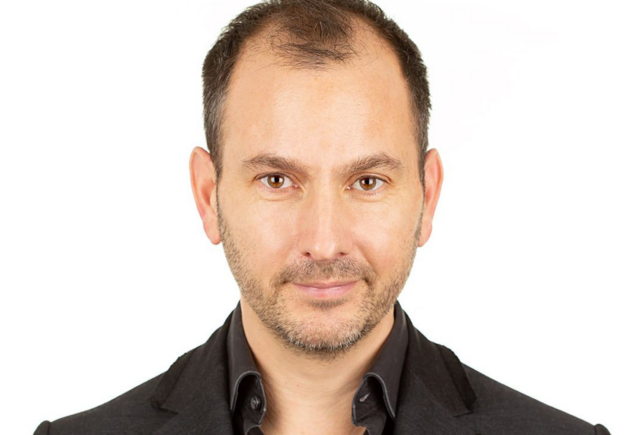ASN Impact Investors, Ocean 14 Capital, New Forests and Phenix Capital talk to Impact Investor about the challenges and opportunities for safeguarding biodiversity and directing capital to support nature.

“In the last 18 months, the biggest impact is awareness that there is a biodiversity problem,” says Dirk Meuleman, CEO of Phenix Capital, speaking about the period since the historic adoption of the Kunming-Montreal Global Biodiversity Framework (GBF) by the 15th Conference of Parties (COP15) to the Convention on Biological Diversity (CBD) on December 2022.
The GBF, seen as the most significant international commitment to biodiversity to date, includes four global goals and 23 targets, including the ’30 by 30′ target which aims to conserve 30% of the world’s land, fresh water and seas by 2030. It also includes commitments to plug the biodiversity funding gap estimated at $700bn (€650bn) per year until 2030 by repurposing harmful subsidies and mobilising both public and private finance in support of nature.

Jo Saleeba, global head of sustainability and impact at New Forests, a global investment manager focused on nature-based assets, says that in the area of private finance the growing awareness of natural capital has translated into an increase in financial products targeting nature.
“There has been some progress since 2022 with various groups launching funds with impact targets, including some with a biodiversity component”, she says pointing to her company’s own African Forestry Strategy, which launched in late 2022 and targets four areas of impact, covering social and environmental aspects, including biodiversity conservation.
The increase in funds targeting biodiversity is backed up by findings in a recent report from Phenix Capital. The report found that funds targeting biodiversity, which includes those focusing on SDG 15 – Life on Land, SDG 2 – Zero Hunger, SDG 6 – Clean Water, and SDG 14 – Life below Water, had increased 234%, from 323 funds in 2015 to 1080 funds in 2024.

But San Lie, CEO of ASN Impact Investors, managers of the Biodiversity Fund, says that it is important to be aware that many new investment funds are mainly focused on reducing the negative burden on impact and biodiversity.
“This is also important. However, doing less harm is not good enough. It is still doing harm. For biodiversity protection and restoration, more focus on positive impact is needed. That’s what we do and we hope more investors will follow.”
Reducing harmful subsidies
Doing less harm is the focal point of the GBF’s Target 18, which commits countries to substantially and progressively reducing subsidies harmful to biodiversity by at least $500bn per year by 2030, while scaling up positive incentives for the conservation and sustainable use of biodiversity.

Chris Gorell Barnes, founding partner of Ocean 14 Capital, which manages what it says is the largest thematic fund to target the blue economy today, highlights the urgent need to remove harmful subsidies and create the right economic incentives for nature conservation.
“Looking solely at the area of oceans, $40bn is ploughed per year into illegal, unregulated and unreported fishing by vessels that are destroying the ocean. So, where is the economic incentive to conserve and protect the ocean? How are you going to securitise that enormous amount of biodiversity and how do governments channel that money into the space?”
Multi-pronged approach
Gorell Barnes says the GBF provides a solid policy framework albeit significant challenges remain in mobilising the capital required.
The GBF has set a target of mobilising at least $200bn by 2030 for biodiversity from a range of both public and private sources. Developed countries are also expected to significantly increase their international finance flows to developing countries for biodiversity protection, from $20bn per year by 2025 rising to at least $30bn per year by 2030.
“To mobilise the capital needed to conserve and restore nature will require a multi-pronged approach that includes standardisation of biodiversity data and metrics to measure the risks, the removal of harmful subsidies to create the right economic incentives for nature conservation, and better collaboration between public and private stakeholders to channel financing to nature, including through blended finance and other innovative structures,” Gorell Barnes explains.
Lie agrees that blended finance vehicles are a great means to de-risk using concessional capital from governments and development banks.
“This public money helps us to invest in projects with a positive biodiversity impact but with relatively high risk, particularly since most biodiversity hotspots are located in emerging markets,” he says.

Meuleman adds that public perception will also need to be addressed. “Today, 56% of the world’s population lives in cities and this number is growing. It is hard to connect to the nature problem when surrounded by concrete,” he says adding that to bring in more private sector money would require “making biodiversity an imperative like climate change”.
Biodiversity data
“What is the value of the ecosystem service of a natural asset?” asks Gorell Barnes who gives the example of a mangrove, which could be valued for its ability to sequester carbon or as a habitat for protecting juvenile species.
“There are many different services that nature provides but at the moment they’re not valued and that’s where nature gets abused. That’s why having that data, those frameworks and support through a collaborative approach is super important,” he adds.
Ocean 14 Capital recently invested in GoodCarbon, a nature-based carbon credit trading platform, which Gorell Barnes says addresses the issue of transparency and lack of measurable impact that has plagued the carbon trading industry.
“GoodCarbon is a relatively early-stage company which is nevertheless signing some big contracts with corporates and has the potential to be transformative in terms of nature protection and valuing nature and biodiversity. They work with, on and sometimes even own the projects instead of just finding the credits and then selling them, helping to rebuild trust in biodiversity carbon credits and providing transparency and real quality assurance,” he adds.
Lie says that their biodiversity fund works with the funds and companies it invests in to improve measurement. “Measuring positive impact is still very new but with our biodiversity fund we invest in companies and funds that operate in balance with nature. Together with these companies and funds we [have] built on improving measurement but foremost, we focus on making these better business models and more widespread”
But, Lie says that measurement is only one piece of the puzzle. “Measuring is a means and not an end in itself. It is about the actual impact on the ground. It is about the story behind the numbers.”
Focus on Africa
Focusing specifically on Africa, Saleeba says the diversity of the continent, including its many languages, cultures, different legal frameworks and transport, logistics and infrastructure challenges, meant the rules and expectations around biodiversity management were vastly different.
One example she gives is of incentives offered to companies with long-term land leases, which she says are often around using land rather than leaving it idle for regeneration. Another, is the significant need for climate-smart adaptation for subsistence agriculture, as farmers rely on predictable weather patterns and the majority do not have insurance or buffers for times of drought or flooding in order to survive. “Biodiversity conservation often doesn’t get as much airtime as these pressing issues.”
Saleeba says New Forests’ assets in Africa have responsible forestry certification which meant that between 10 and 30% of the areas under management were set aside for conservation and active measures were taken to monitor and protect biodiversity.
“It requires a holistic approach – working with governments, companies, schools, NGOs to raise awareness of the need for conservation, and to help rural communities develop alternate livelihoods,” she adds.
Lie says their fund also invests in African conservation efforts, including into the Wildlife Conservation Bond, also known as the ‘Rhino Bond’. He believes the bond is a good example of private capital being channelled in support of conservation efforts using a blended finance approach.
“This bond is a combination of a bond with a good credit rating (AAA, because it is issued by the World Bank) and a performance-based grant funded by the European DFI. No interest is paid on the bond. Instead, the money will go to two national parks in South Africa,” he explains.
At the end of the bond’s term, investors receive their deposit back along with a variable return. “This payout depends on the rate of rhino population growth in the two parks. The nice thing is that after one year, the rhino population had already increased by 7.3%,” he adds.
Looking ahead
The GBF requires countries to submit revised or updated national biodiversity strategies and action plans (NBSAPs) aligned with the goals and targets of the GBF before COP16, which convenes in Colombia between October and November this year. But unlike the nationally determined contributions (NDCs) to meet the climate goals of the Paris Agreement, NBSAPs are not a legal requirement and at the time of publication, just seven countries and the EU had submitted updated action plans.
More concerning perhaps are findings published by the UN Environment Programme’s State of Finance for Nature Report 2023 in December last year, that revealed nature-negative finance flows from both public and private sector sources globally stood at almost $7trn per year, dwarfing the estimated $200bn of finance flows to nature-based solutions (NbS). The majority of negative finance flows ($5trn) are from the private finance sector and are a staggering 140 times larger than private investments into NbS.
“There really is a need to scale-up. Many institutional investors are still hesitant and cautious. In a way I understand, this is new territory for them,” says Lie. “But given the biodiversity crisis we face, there is no time to waste. The only thing we can be sure of, is that the risks will only increase.”





